NATURAL BEAUTIES
Simien Mountains National Park
The Simien Mountains national park is located in the Northern Ethiopian Highlands close to the historical city of Gondar, Amhara Regional state.it is one of the most beautiful and popular destination natural landscapes in Africa, and is dubbed ‘’The Roof of Africa’’. Ethiopia has the highest total portion of landmass on the continent, and with mountains reaching 4,550 meters, the Simien Mountains are the pinnacle of Ethiopia’s peaks and it makes you breathless by its magnificent landscapes. The park is inscribed as a Natural World Heritage Site in 1979, whereupon UNESCO lauded it as “one of the world’s most spectacular landscapes, with jagged mountain peaks deep valleys and sharp precipices dropping some 1,500m. It is a land of overwhelming beauty — towering waterfalls, jagged peaks, endemic Gelada monkeys, deep valleys, sudden precipices, frightening sheer cliffs, luxury lodges and a dramatic escarpment stretching for miles with astonishing views over the lush rugged lowlands below.
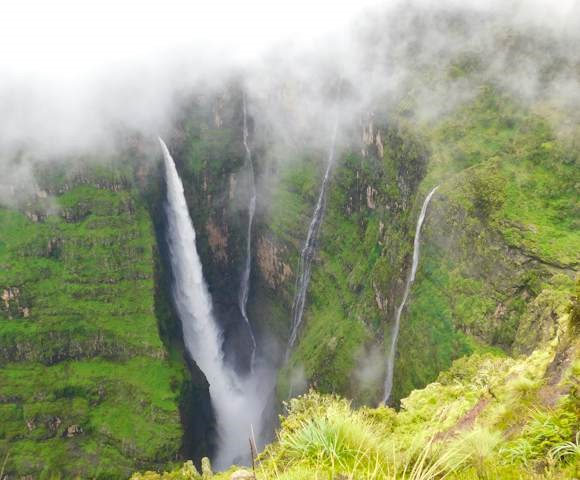
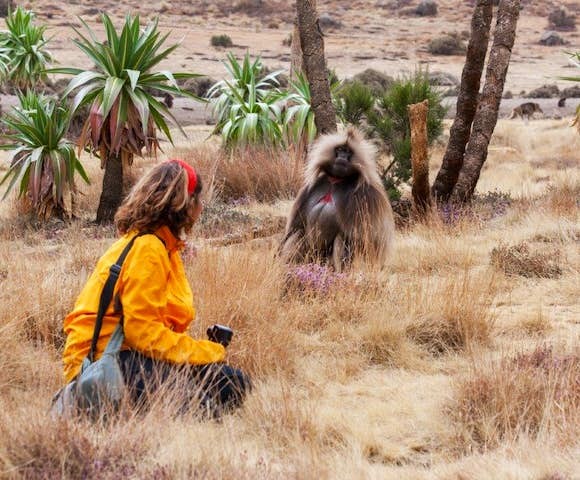
Today, the Simien Mountain massif is one of the major highlands of Africa and even boasts snow and ice on the highest points. The park itself has three general botanical regions — the cultivated and grazed lower slopes, the forested alpine regions (up to 3600m), and the mountain grasslands of the higher lands. The dramatic landscape is a result of massive volcanic activity that occurred millions of years ago followed by erosion ever since. As one of Africa’s widest and most beautiful mountain ranges, the Simien Mountains comprise several plateaus, separated by broad river valleys, along with a number of peaks that rise above 4000 meters, like Ras Dashen, which is the highest peak (and the highest point of Ethiopia) at 4,550 meters above sea-level.
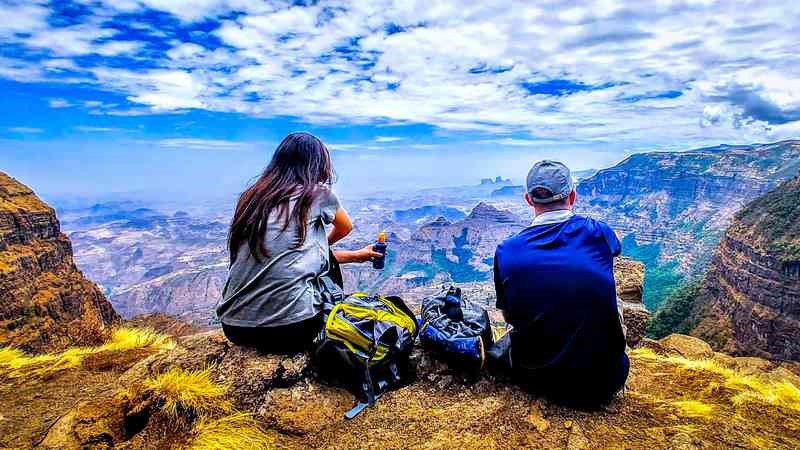
Unique to Semien Park
While the Simien Mountains are home to a great variety of wildlife including klipspringers, bushbucks, duikers, hyenas and jackals, the altitudinal variation of the national park combined with its isolation has given rise to a number of rare and endemic species and a high level of biodiversity. The big three mammal species that can only be found in the Simien Mountains are the Ethiopian Wolf (also known as the Red Fox or the Simien Fox), the Walia Ibex, and the Gelada Baboon. Ras Dashen, which is the highest peak of Ethiopia, at 4550 meters is found in.
There are a number of smaller camps available for visitors. Community lodges provide toilets, running water, Beds, and blankets, as well as simple Ethiopian foods. There are also options for more luxurious accommodation inside the park at the beautiful Simien Lodge or Limalimo Lodge and some other new lodges.
Best time to visit Simien Mountains
The best time to visit the Simien Mountains is between October and March, with the clearest skies and warmest weather. December, January, and February is the peak travel season. It is still possible to do treks, we recommend visiting at a different time of year if possible.
Bale Mountains National Park
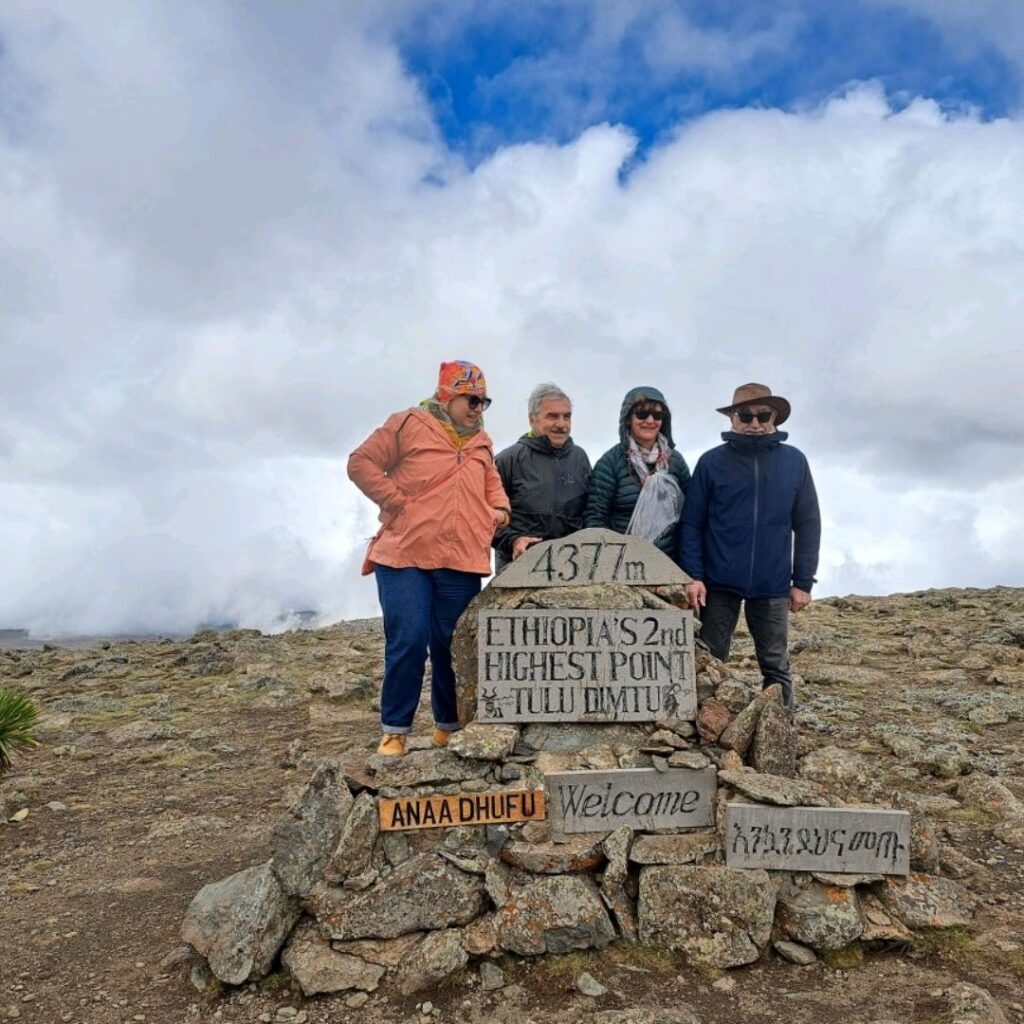
The Bale Mountains are one of Ethiopia’s most beautiful wilderness destinations. A verdant, jungle environment packed with endemic wildlife, staggering vistas, boutique lodges and awesome hiking routes. it is Ethiopia’s most important biodiversity hotspot and one of the top five birding sites in Africa. More than 1,300 plant species have been identified, among them 160 Ethiopian endemics and 23 that are unique to the park. Bale is the most important stronghold to three endemic large mammal species – the charismatic Ethiopian wolf, handsome mountain nyala and delightful Bale monkey.
Rising over 4,377 metres, the Afro-Alpine plateau of the Bale Mountains is the highest mountainous area in southern Ethiopia. The north side of the park is home to the Sanetti Plateau – a high altitude region of glacial lakes surrounded by high volcanic ridges. In the south of the park you’ll find the Harenna Forest, a thick, jungle region home to Colobus monkeys, wild horses, forest hogs, warthogs, and even lions and leopards. The beautiful Bale Mountain Lodge – nestled into the thickets of the Harenna Forest – is one Ethiopia’s best boutique lodges. It’s the perfect place to return for sun-downers by the roaring fire after a day’s exploring.
In the surrounding villages, makeshift bars serve Tej (honey wine) round the clock and in the surrounding forests you can learn how that incredible Ethiopian coffee is produced.
The Bale Mountains are one of Ethiopia’s best wildlife destinations. The endemic (and rather elusive) Ethiopian Wolf is found in large numbers here. The conservation of the Ethiopian Wolf, as well as the endangered Mountain Nyala, was a leading reason for the establishment of the national park. It’s not just the Wolf and Nyala – the Bale Mountains are home to 20 endemic mammals, not to mention dozens of reptiles and amphibians, and hundreds of bird species. Other wildlife often spotted in the park includes the Menelik Bushbuck, grey duiker, warthog, African golden wolf, colobus monkey, and spotted hyena.If you look to the trees, you’ll find countless bird species, monkeys, and chameleons.
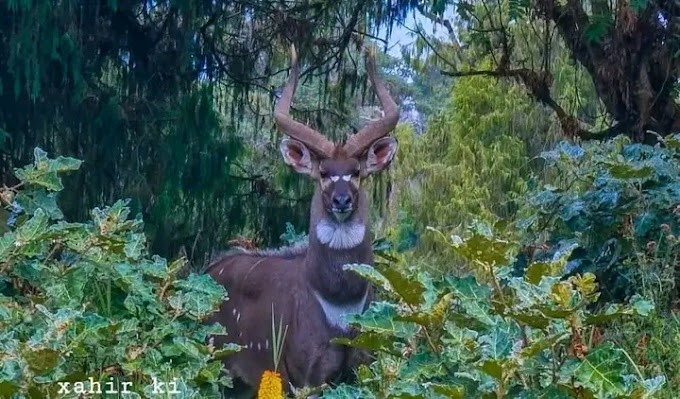
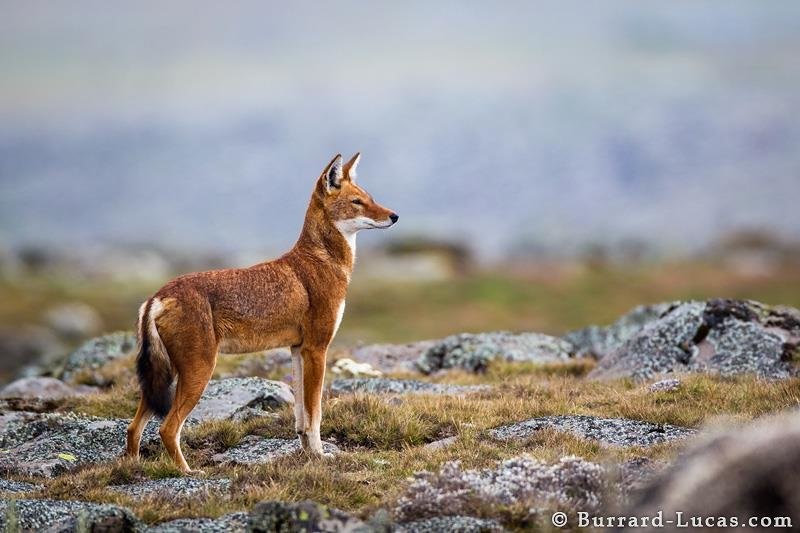
Thanks to its altitudinal range, the Bale Mountains can support a huge variety of plant life.
There are around 1,300 species of flowering plants in the mountains, of which 12% are endemic to Ethiopia and 14% endemic to the Bale Mountains alone. The Helichrysum (‘everlasting’ flowers) is the most dominant flower in the park, their yellow flowers making for beautiful backdrops as you hike through the forests in search of wildlife. The southern part of the park is heavily forested with wild forest coffee (coffee arabica) and medicinal plants like the hagenia (Africa redwood).
The most striking of all are the seemingly misshapen Juniper Trees, whose branches bend and contort to create a scene straight out of a Harry Potter film!
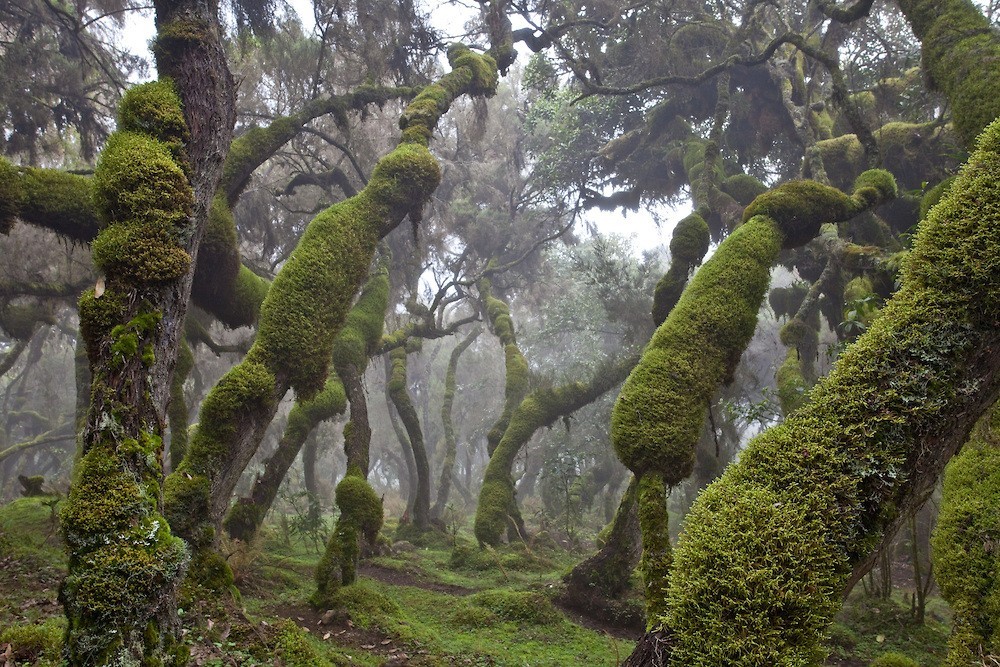
The best time to visit the Bale Mountains is from October to March. At this time of year, the days are generally warm and dry, and temperatures can reach up to 25°C (although they are usually closer to 15°C). These dry days offer more pleasant conditions for trekking in the Bale Mountains, and clearer views of the breath-taking landscapes.
Danakil Depression
The Danakil Depression is one of the wildest destinations in Africa. A searing hot, brutal desert landscape dotted with stunning geological formations, lakes, acid springs, volcanoes, and salt flats.
The Danakil Depression is not a typical feature along the historic north circuit of Ethiopia. Instead, travellers keen to experience this crazy environment add it on at the start or end of their journey across the country.
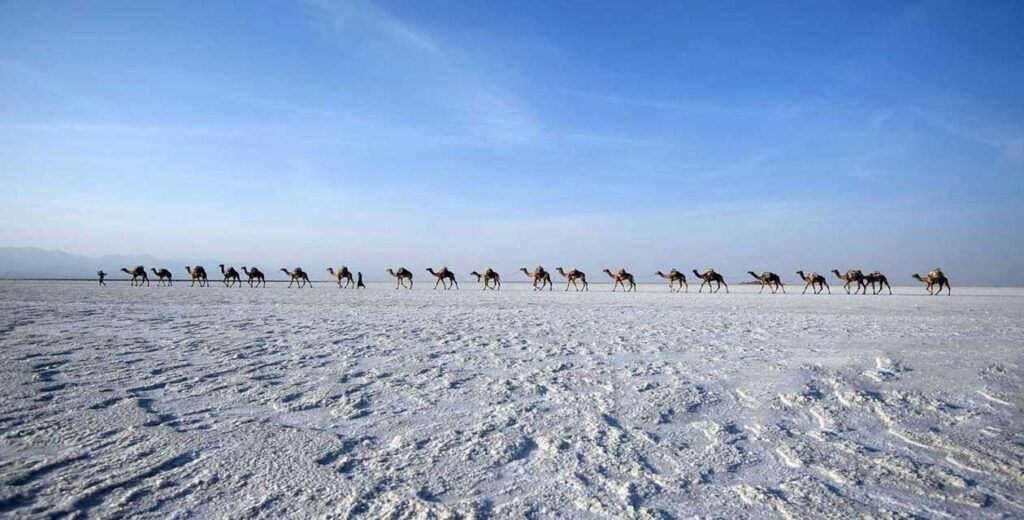
Erta Ale
Erta Ale (meaning ‘Smoking Mountain’ in the Afar language) is found in the Danakil Depression in Ethiopia’s Afar region. It is Ethiopia’s most active volcano and contains one of just six active lava lakes on Earth. Sitting in the Danakil Depression under 40°C (104°F) heat, it’s as unforgiving as it is visually staggering.
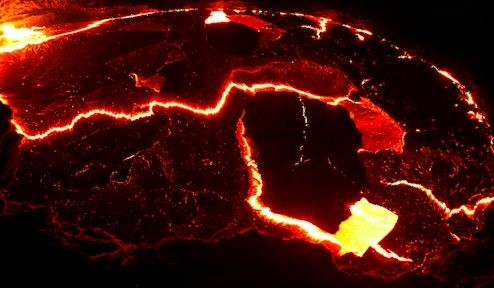
The volcano contains an active lava lake, which means the lava in the crater remains liquid due to convection currents of the magma system underneath. Visually, the result is a thin charcoal crust that’s pierced by glowing red fissures of searing liquid lava. The lava spits and splatters and the lack of guard rails at the crater rim means you can peer directly into the fiery belly, known locally as the ‘gateway to hell’.
The gently rising slopes of Erta Ale crescendo to a 1700 x 600 metre caldera dotted with pit craters containing the lava lake.
Summiting Erta Ale is to traverse through one of the world’s most challenging environments. The searing heat of the Danakil means the volcano can only be climbed in the evening as the sun sets, and descended in the very early hours of the morning.
Dallol
It is the other futures of Danakil Depression Characterized by bright, multi-coloured springs, fissures, and geysers, and with average annual temperatures of 35°C (95°F), Dallol is one of the most visually compelling and geologically fascinating destinations on Earth.
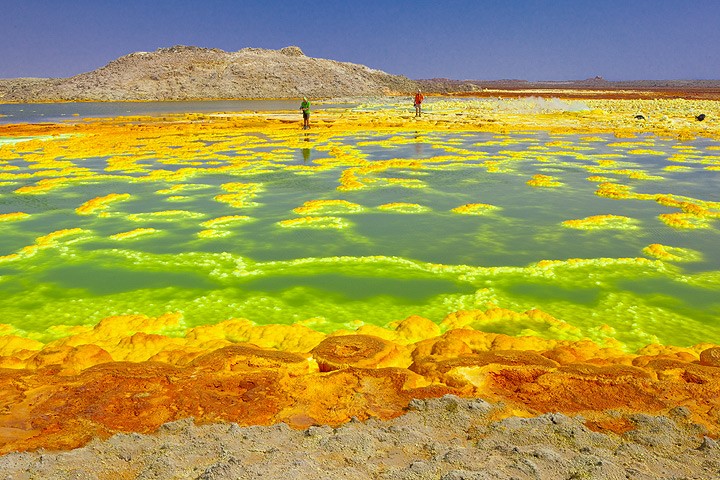
Dallol is a cinder cone volcano in the Danakil Depression, although its unique geology means it lacks any of the archetypal volcanic looks. Instead, Dallol is a canvas of bright green, reds, and yellows distributed across hundreds of hot acidic springs and mounds of salt deposits.
The hydrothermal activity below the Dallol crater is responsible for this kaleidoscopic landscape. As groundwater diffuses across from the highlands, it is heated by the magma below Dallol and pushed through the crater, dissolving salts and other minerals in the process. These minerals oxidize to create colourful, supersaturated hot springs. The intense heat of the Danakil then evaporates the water, leaving behind colourful salt formations that demarcate the springs.
The wild Dallol landscape is the result of on-going geological processes, which means Dallol is an extremely dynamic landscape, with new springs and salt formations arising continuously. Although similar in appearance to colourful springs of America’s Yellowstone National Park, Dallol’s colours arise from inorganic, geological processes, rather than biological ones.
The intense heat of the Danakil Depression, combined with the extreme concentrations of salts, potash, and other minerals in the hot springs makes Dallol prime research ground for poly extremophile microbes, which may hold clues as to how life began on Earth, and how life might exist on other planets like Mars.